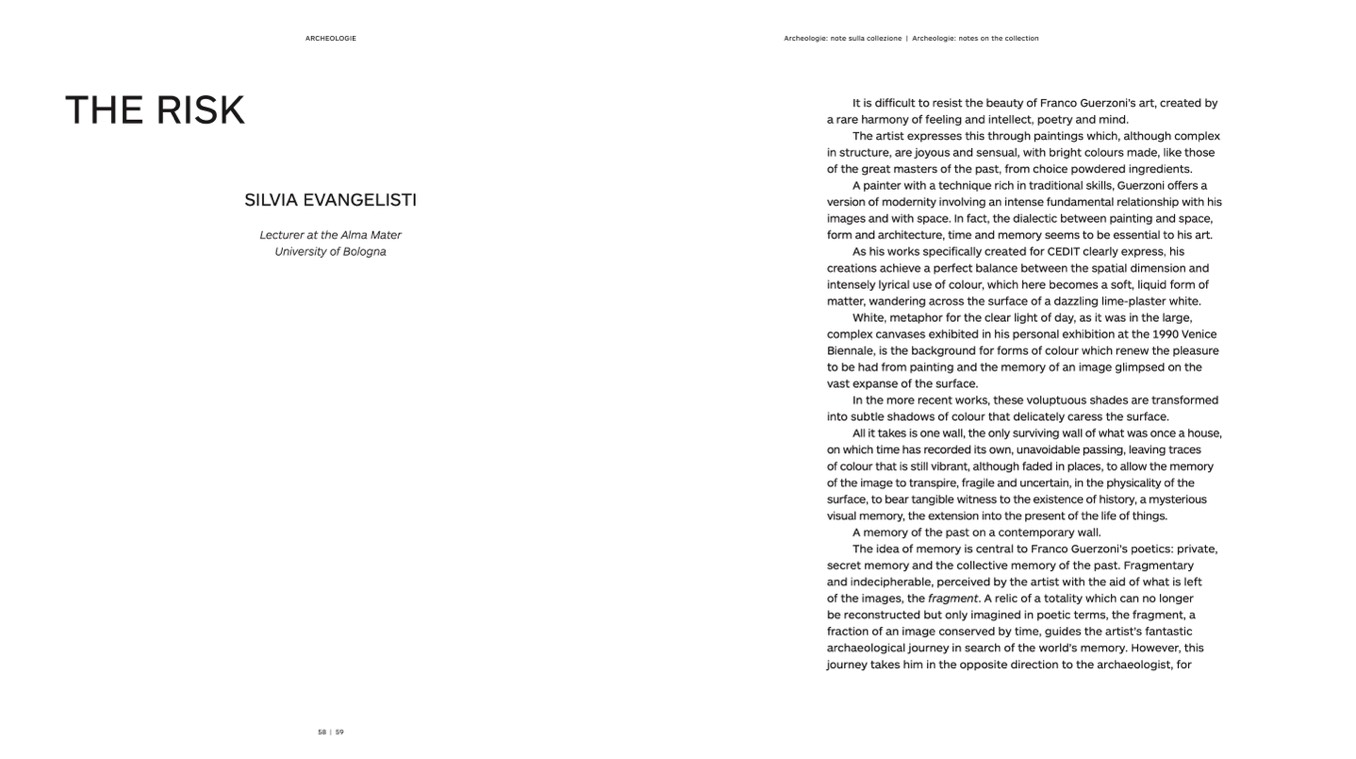
THE RISK
SILVIA EVANGELISTI
Lecturer at the Alma Mater
University of Bologna
It is difficult to resist the beauty of Franco Guerzoni’s art, created by
a rare harmony of feeling and intellect, poetry and mind.
The artist expresses this through paintings which, although complex
in structure, are joyous and sensual, with bright colours made, like those
of the great masters of the past, from choice powdered ingredients.
A painter with a technique rich in traditional skills, Guerzoni offers a
version of modernity involving an intense fundamental relationship with his
images and with space. In fact, the dialectic between painting and space,
form and architecture, time and memory seems to be essential to his art.
As his works specifically created for CEDIT clearly express, his
creations achieve a perfect balance between the spatial dimension and
intensely lyrical use of colour, which here becomes a soft, liquid form of
matter, wandering across the surface of a dazzling lime-plaster white.
White, metaphor for the clear light of day, as it was in the large,
complex canvases exhibited in his personal exhibition at the 1990 Venice
Biennale, is the background for forms of colour which renew the pleasure
to be had from painting and the memory of an image glimpsed on the
vast expanse of the surface.
In the more recent works, these voluptuous shades are transformed
into subtle shadows of colour that delicately caress the surface.
All it takes is one wall, the only surviving wall of what was once a house,
on which time has recorded its own, unavoidable passing, leaving traces
of colour that is still vibrant, although faded in places, to allow the memory
of the image to transpire, fragile and uncertain, in the physicality of the
surface, to bear tangible witness to the existence of history, a mysterious
visual memory, the extension into the present of the life of things.
A memory of the past on a contemporary wall.
The idea of memory is central to Franco Guerzoni’s poetics: private,
secret memory and the collective memory of the past. Fragmentary
and indecipherable, perceived by the artist with the aid of what is left
of the images, the fragment. A relic of a totality which can no longer
be reconstructed but only imagined in poetic terms, the fragment, a
fraction of an image conserved by time, guides the artist’s fantastic
archaeological journey in search of the world’s memory. However, this
journey takes him in the opposite direction to the archaeologist, for
ARCHEOLOGIE
Archeologie: note sulla collezione | Archeologie: notes on the collection
58 | 59

